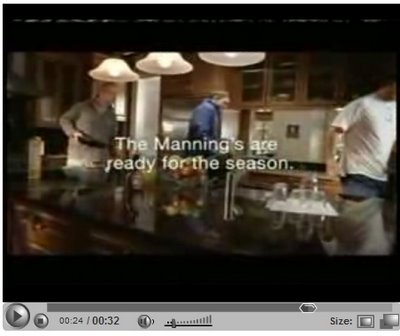People often ask me where I’m from. It’s not that I have a foreign accent or wear lederhosen. The undertone I always interpret is “Why are you brown?” Ask yourself, would you ask a Caucasian this? Or an African American? Not unless they’re wearing overalls and chewing chaw, I reckon. Considering today’s political issues, you probably would ask the same question of someone of Latino, Asian, or Middle Eastern heritage. But this is beside the point. Internally, my first response is “Why does it matter?” But the answer is Cherokee, American Indian. Not because I happen to carry a CDIB card (Certificate of Degree of Indian Blood, natch), but also because of where I was raised and what I associate myself with*. To me, it’s a matter of Indianness, not only Indian blood. But I prattle on, here is really what I am:

Anyhow, that was just a lead into some of the exciting news from Indian Country that I thought I should share with you.
Hey, did you know the writer of Wizard of Oz hated Indians? It’s true. L. Frank Baum, author of Wizard of Oz, wrote a pre-Wizard, racist article in a South Dakota newspaper The Aberdeen Saturday Pioneer before his novel was published. His articles were so incensing that a doctoral student believes that his call for the “extermination” of Native Americans in order “to protect civilization” from “savages” were also influential. This article was published just two days before the U.S. 7th Cavalry led an attack on Lakota Sioux during which 150 people died, otherwise known as the Battle at Wounded Knee.
But that’s not the important part. The important part is that upon learning that their grandfather may have catalyzed such an attack, the Baum family made a public apology to the Lakota Sioux. To some, this “gross violation of lives” was reconciled with the hope that sharing “food, stories, and tears” is a major step toward healing. Incidences such as these are often glossed over or whitewashed. But it’s important that we acknowledge some of the other terrorist acts have happened in our nation. I’m amazed at how a simple act such as a public apology from one family to another says a great deal about acknowledging human dignity, an important step toward racial equality. But don’t take my word for it, take NPR’s.
Also, Indians create awesome art. And art that’s not necessarily sold from New Mexico or traveling crafts fairs in the summer. It’s true. Tulsa writer and director Sterlin Harjo is working on a coming-of-age film in Tulsa. According to Harjo, Four Sheets to the Wind will focus on “human beings who happen to be Native Americans.” The New York Times article brings up two important points.
One, it’s difficult to make Indian cinema. Often times it’s passed over for financing because it doesn’t thrill like Hollywood blockbusters. There aren’t famous Indians that captivate the audience (whoa, that sentence totally happened and I’m not editing it), unless you count Gary Farmer or Wes Studi. Production costs are always a major challenge for Indian cinema, but it may be possible that with the help of community and local artists, it may turn out to be a better and more representational film. So this film won’t be your Dancing with Wolves or Last of the Mohicans romanticized Tonto bullshit.
Second, the article brings up the point of oral tradition and how some critics argue that Indian cinema is set in an unalterable format that goes against the basic principles of our art. To this, I concede that interpretation is always malleable, especially in film. Though temporal in medium, it’s in dynamic form. Every observer brings his own personal knowledge and experience to the table whenever they experience art…so there. I hope that Four Sheets, if and when it’s released, will challenge non-Indians to think outside of any stereotypes they may have about Indians.
Speaking of stereotypes, I noticed that the Indian mascot issue has come up in the media again and most heatedly with the Fighting Illini in Chicago. To the NCAA President’s credit, Myles Brand has approached this issue in the best manner possible. The commission has been thoughtful in its decision and respectful of learning the involved tribal issues. Despite the ruling, some Illini alumni and a majority of the general public just don't get it.
In their favor, I did not get it at first. These mascots are just portraying Indians right? What’s the big deal? We have the Fighting Irish and the Vikings on the field. Why should it matter about Indians? Again, it all comes back to interpretation and stereotypes. (I know people are going to get pissed with me here. Feel free to vent in the comments. It’s okay.) It would be a big deal if the Irishman came out on the field with a bottle of Irish whiskey and started fighting with his best friend, accusing him of cheating with his wife. It would be a big deal if the Vikings came out…with their blonde hair and statuesque presence and their nice, woolen sweaters and their whole discovery of new continents. Okay, so I can’t diss on the Vikings.
But my point is that the Indian mascot is built on a stereotype that doesn’t exist anymore with feather warbonnets and tomahawk chops. We don’t do that. We hardly ever did that. Not many tribes don headdresses, at least none east of the Mississippi, the part that was removed to the west of the Mississippi and then forced into a tiny area about the size of…well, Oklahoma. The Sioux are actually the only tribe that I’m aware of that wore a warbonnet. And most of the tomahawk chops were performed on us rather than the reverse. It’s true. More scalping was committed against Indians rather than by Indians. But this imagery works in a team’s favor. The stereotype of the Indian is savagery, used to intimidate other teams and create a sense of pride within the people who can afford to buy season tickets. It’s your heart of darkness at our expense.
And to incense you further, if you happen to call your team the Killer Bees that has a mascot in blackface and danced a jig with Aunt Jemima, you would have a very different reaction than what you would have with Indians. But the insult and injury is the same. And most people don’t seem to realize this. So the next time you complain that it’s not fair that you can’t wear face paint, beat on plastic drums and dance like an idiot…well, wait a minute, you can. It is football after all. Just don’t do it in our name or our “image,” an image that was impressed upon us without honor**.

* Yes, I know I’m ending a lot of sentences with prepositions. Probably some split infinitives, too. And comma splices. No, I don’t really care. However, I am using a number of collective pronouns (us, we, everyone, anyone). This is not to imply that I am responding on behalf of one tribe or Indians in general. This is my opinion about the issue, not to be confused with the entire Indian nation.
** One stereotype that is true is that we are proud, brave and loyal to our tribes. We also throw kick ass parties and will bust you in football and basketball. It’s a shame that not many of us make it to college to actually prove it.







